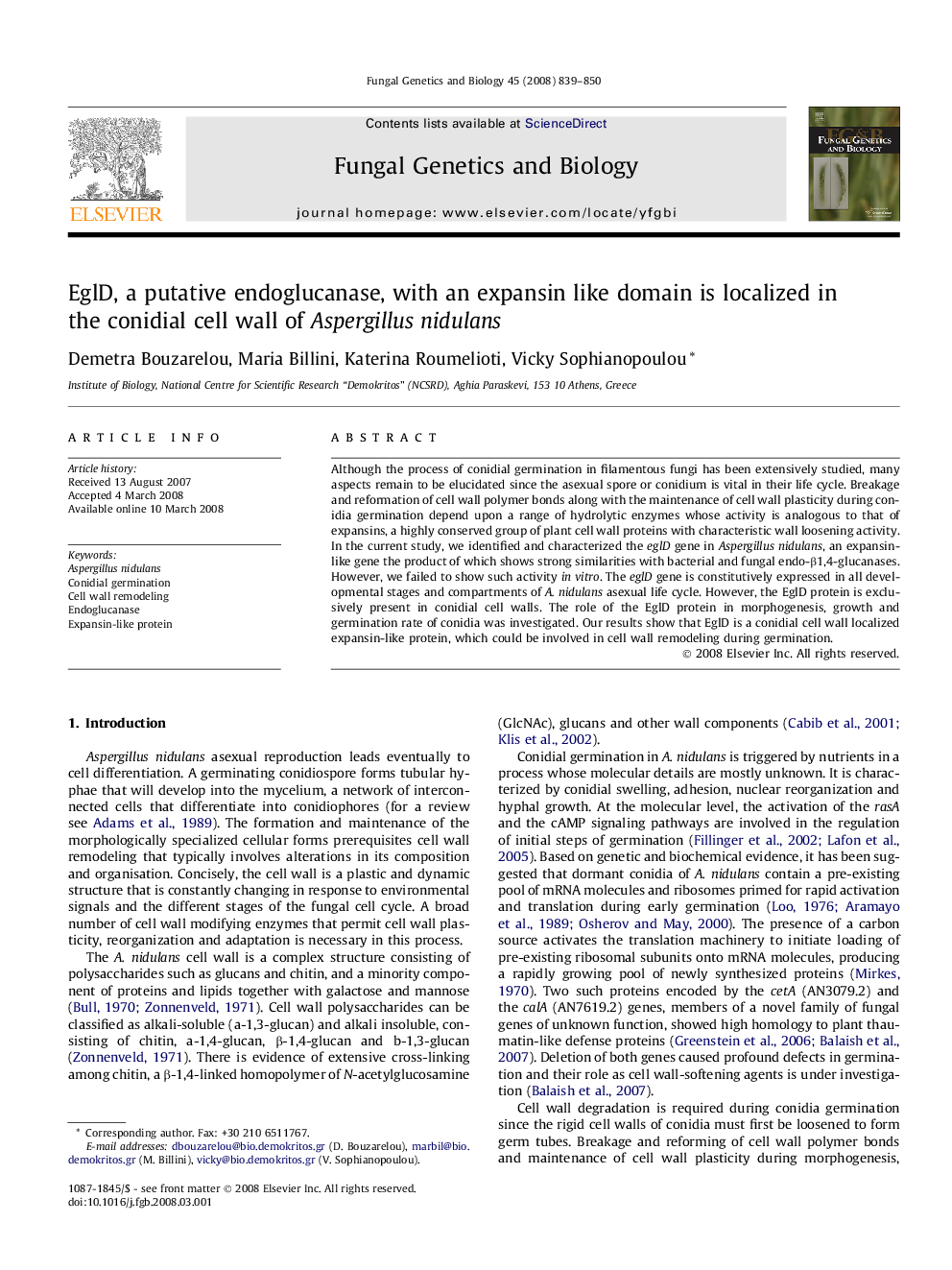| Article ID | Journal | Published Year | Pages | File Type |
|---|---|---|---|---|
| 2181366 | Fungal Genetics and Biology | 2008 | 12 Pages |
Although the process of conidial germination in filamentous fungi has been extensively studied, many aspects remain to be elucidated since the asexual spore or conidium is vital in their life cycle. Breakage and reformation of cell wall polymer bonds along with the maintenance of cell wall plasticity during conidia germination depend upon a range of hydrolytic enzymes whose activity is analogous to that of expansins, a highly conserved group of plant cell wall proteins with characteristic wall loosening activity. In the current study, we identified and characterized the eglD gene in Aspergillus nidulans, an expansin-like gene the product of which shows strong similarities with bacterial and fungal endo-β1,4-glucanases. However, we failed to show such activity in vitro. The eglD gene is constitutively expressed in all developmental stages and compartments of A. nidulans asexual life cycle. However, the EglD protein is exclusively present in conidial cell walls. The role of the EglD protein in morphogenesis, growth and germination rate of conidia was investigated. Our results show that EglD is a conidial cell wall localized expansin-like protein, which could be involved in cell wall remodeling during germination.
